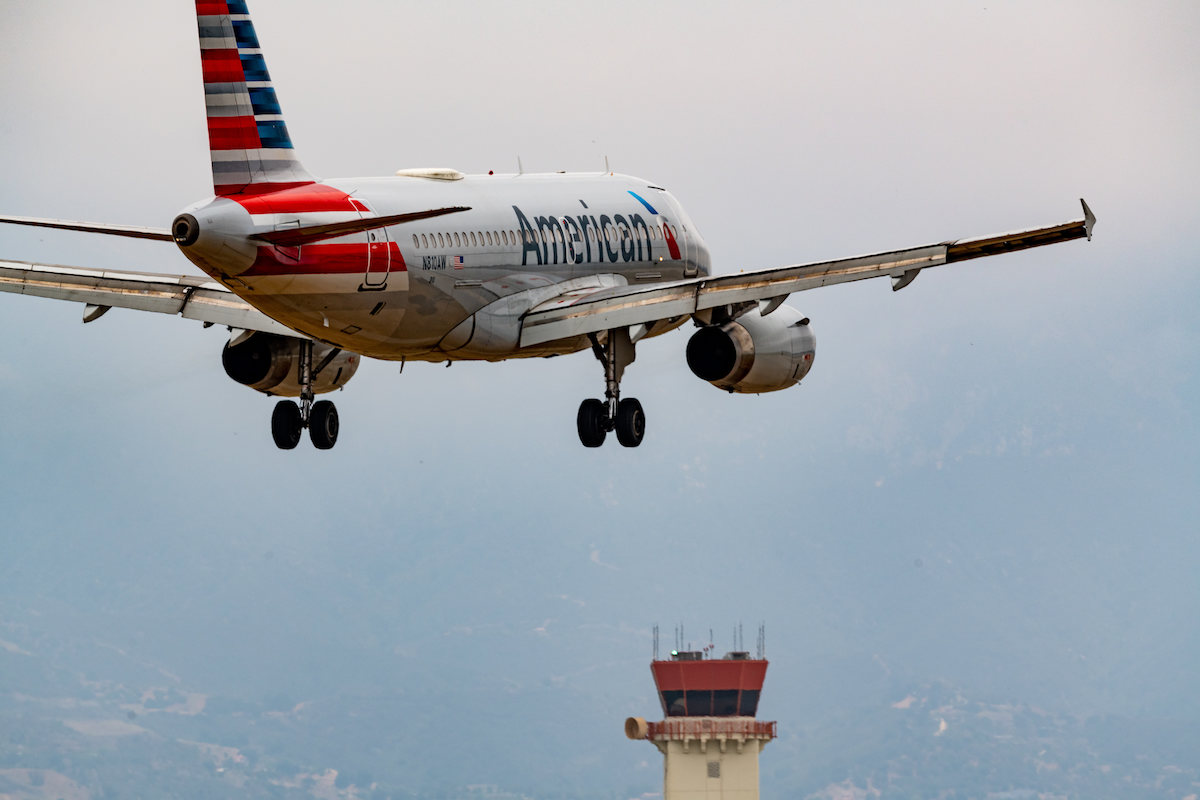Skift Take
In his final quarterly earnings call as CEO of American Airlines, Doug Parker bid adieu after 107 consecutive results presentations since 1995. And he leaves American in solid shape with the airline having maintained its market-leading position in the U.S. and profitability expected to return later this year.
American Airlines CEO Doug Parker is confident that the worst of the disruptions related to the botched rollout of 5G wireless technology in the U.S. are past. But this comes only after several global airlines cancelled select flights to the U.S. and two days after telecom companies voluntarily delayed switching on the technology near certain airports.
“It wasn’t our finest hour as a country to get us to that point,” Parker said during American’s fourth quarter results call on Thursday. Government agencies, planemakers, and the telecom companies are now talking and sharing info, which will allow the safe full rollout of 5G technology, which allows for faster wireless speeds, he added.
American cancelled more than eight flights and delayed others as a result of the 5G rollout, according to a memo from operations chief David Seymour on Wednesday. The airline is awaiting U.S. Federal Aviation Administration authorization to operate certain Airbus aircraft and regional jets to airports near 5G transmitters during bad weather that require automated approaches. There are fears that the wireless technology could interfere with the altimeters on these aircraft.
This latest operational snafu comes as the impact of the Omicron variant ebbs. American avoided many of the flight cancellations that affected other airlines over the holidays because it had proactively pulled down schedules through year-end after its own bout of cancellations at the end of October. However, the variant did adversely impact demand after the holidays and particularly in January and February when American expects losses before a significant improvement in March.
American’s outlook matches that of Delta Air Lines, which forecasts January and February losses and a March profit. Executives at both carrier outlined a quicker recovery from Omicron as compared with past variants of Covid-19.
The broader pandemic recovery remains on track, according to American President and incoming CEO Robert Isom. Omicron only affected the “timing” of the recovery to later in 2022 but not the fundamentals. Critically, domestic business travel continued to recovery in the fourth quarter to 70 percent of 2019 levels. However, Isom said the business travel mix remains changed — likely permanently — with American carrying more small- and medium-sized business (SME) travelers rather than managed corporate account travelers. Domestic and short-haul international leisure demand has nearly fully recovered. Only long-haul international demand remains down significantly from 2019 levels.
While American did not officially forecast a 2022 profit, Isom said the airline does anticipate returning to profitability later in the year.
Pilot Conundrum
American, like competitors Delta and United Airlines, faces a pilot shortage at its regional affiliates. The airline selectively culled its schedule this spring to mitigate the impact of the shortage, which Isom said is the result of fewer new pilots coming out of training programs during the pandemic.
“The issue we have is the throughput of pilots and getting them into training,” he said of the issue.
American recorded $61 million in special charges related to the retention of pilots at the carriers that operate American Eagle flights in the fourth quarter. The airline is offering more than $180,000 in hiring bonuses and retention incentives to new pilots at its wholly-owned regional operators, including Envoy, Piedmont Airlines, and PSA Airlines.
Experts have warned that the pilot shortage in the U.S. could hamper the airline recovery this year. For American that means only recovering capacity to roughly 95 percent of 2019 levels this year, which is slightly lower than the forecast it provided in October.
Aside from pilots, American does not face any issues hiring, said Isom. The airline plans to hire 18,000 people across functions, including flight attendants, mechanics, pilots, and reservations agents, in 2022.
And the Numbers
American lost $931 million in the fourth quarter despite improving revenue trends. The airline brought in $9.4 billion in revenues during the period, which was down nearly 17 percent compared to 2019 but a nearly eight-point improvement from the decrease in the third quarter. Expenses were down just 3.6 percent year-over-two-years to $10.2 billion. Passenger traffic was down nearly 17 percent compared to 2019 on a 13 percent decrease in capacity.
For the full year, American lost nearly $2 billion including the benefit of $4 billion in special items particularly federal Covid-19 relief. Revenues were down almost 35 percent to $29.9 billion and expenses were down almost 28 percent to $30.9 billion compared to 2019.
American forecasts revenues at 78-80 percent of 2019 levels, and capacity at 90-92 percent in the first quarter.
The call Thursday marked Parker’s final earnings presentation. While only CEO of American since December 2013 after orchestrating its merger with US Airways, the call was his 107th consecutive results presentation after becoming chief financial officer of America West Airlines in June 1995. Parker steps down as CEO on March 31 though he will remain as non-executive chairman of the airline’s board.
“Our goal right now is to get back to profitability as soon as possible and deliver a reliable product,” said Isom, who will take over as CEO from Parker.
The Daily Newsletter
Our daily coverage of the global travel industry. Written by editors and analysts from across Skift’s brands.
Have a confidential tip for Skift? Get in touch
Tags: american airlines, coronavirus recovery
Photo credit: American CEO Doug Parker says the disruptions from the 5G wireless rollout in the U.S. are in the rear-view mirror. Glenn Beltz / Flickr
